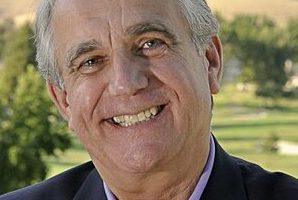Are you a connector or a disconnector? Does it matter? Author Michael Stallard in his recently published Fired Up or Burned Out: How to Reignite your Team’s Passion, Creativity and Productivity thinks so.
Stallard has had an interest in work cultures throughout his career as he wanted to understand the culture that would bring out the best in him. His interest led to a generalized notion of what would bring out the best in all, and he left Wall Street in 2002 (Morgan Stanley) to start a think tank, E Pluribus Partners, to assist people and organizations in becoming the best they could be.
Michael Stallard’s Fired Up or Burned Out addresses organizational and personal passion, creativity, and productivity. Stallard notes in his introduction that fewer than three in 10 Americans are engaged in their jobs (surviving rather than thriving), and sets about to explain why and how it can be fixed.
Fired Up is organized into four sections (and 15 chapters): what fires us up; the keys to connecting a team and lighting their fires; where it begins; and lessons from 20 great leaders. Each section begins with a “What you will learn guide,” and each chapter ends with a “Review, Reflection, and Application” summary. The former provides the theme and the latter provides an excellent reference for future re”view.
Highlights of this well-written book include:
- Why a sense of emotional connection is necessary for people and organizations to thrive.
- How the oft-discussed elements of vision, value and voice are reflected in the richer concepts of inspiring identity, human value, and knowledge flow.
- Why connection depends on the right kind of people whose actions increase connection.
- The three types of people who affect connection: intentional disconnectors, unintentional disconnectors, and intentional connectors.
Stallard centers his book on the fundamental belief that all people want and need to feel valued and shows how the “Power of Connection” works to this end. “Connection meets basic human psychological needs for respect, recognition, belonging, autonomy, personal growth, and meaning.” People with a higher degree of connection experience superior mental and physical (and I suspect spiritual) health, improving the performance of both. And the lack of connection will gradually diminish both, leading to burn out.
Psychiatrists have also observed that the lack of connection leads to feelings of loneliness, isolation, and confusion resulting in behaviors of distrust, disrespect, and dissatisfaction. And at a time when the public is concerned about organizational ethics, it has been noted that in cultures where large numbers of people are disconnected, unethical behavior is more likely to occur.
Stallard links connection to vision, value and voice. Many business authors have underscored the value of the first two elements but less has been written on “voice.”
I found the discussion of “voice” to be one of the most interesting and refreshing aspects of this excellent book. Stallard explains in detail how “voice” or knowledge flow increases connection and fires up people, helps people to make better decisions (the wisdom of the crowd), and increases creativity and innovation. He then suggests several strategies to increase knowledge flow within the organization – top to bottom, bottom to top, and across all functions.
The final section, “Learn from Twenty Great Leaders Over Twenty Days” provides excellent examples of Stallard’s principles in practice by great leaders – Marquis de Lafayette, George Washington, John Wooden, Howard Schultz, and many others.
Fired Up is an excellent read for those who lead, those who want to lead, and even for those who do not lead.
We all need to avoid the traps that lead to failure, disillusionment, and darkness. Fired Up provides a practical way to avoid these traps and to live a full, productive life. While this book is not characterized as a “Christian” book, it is based on sound Christian values.


